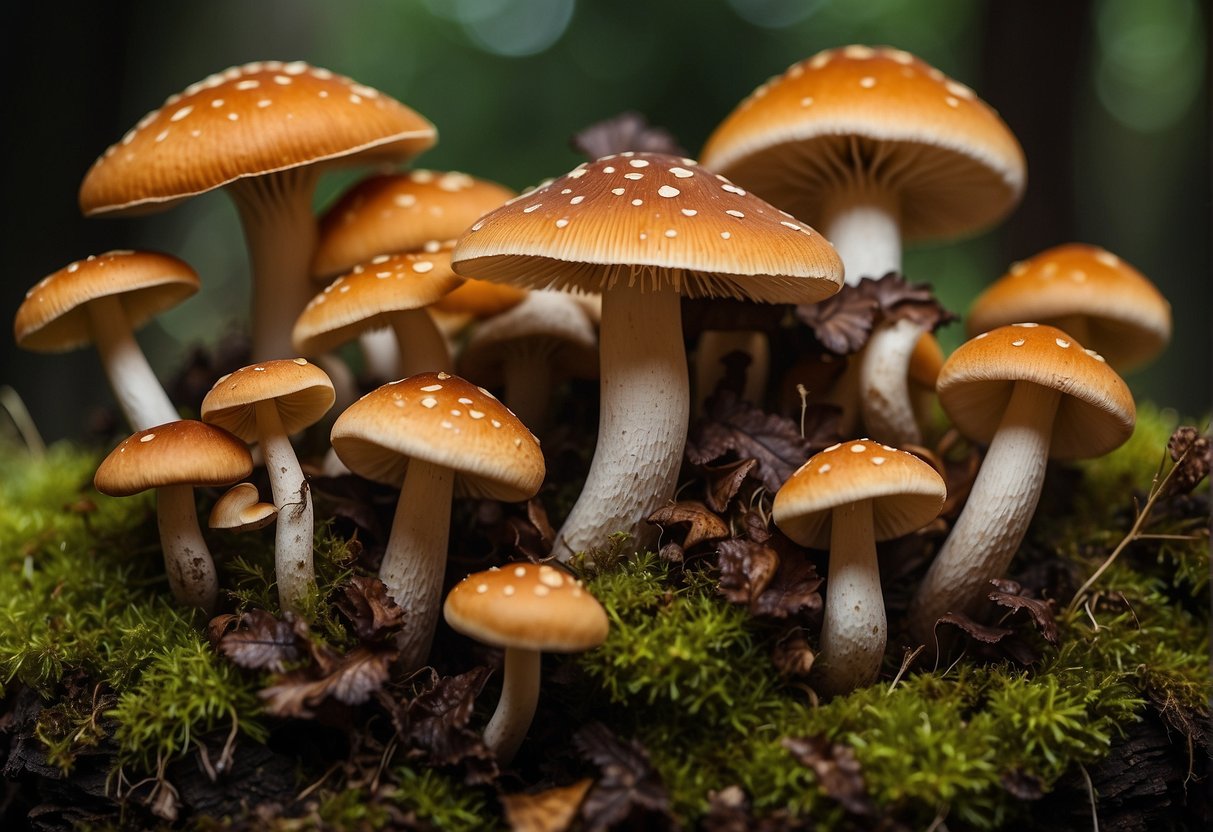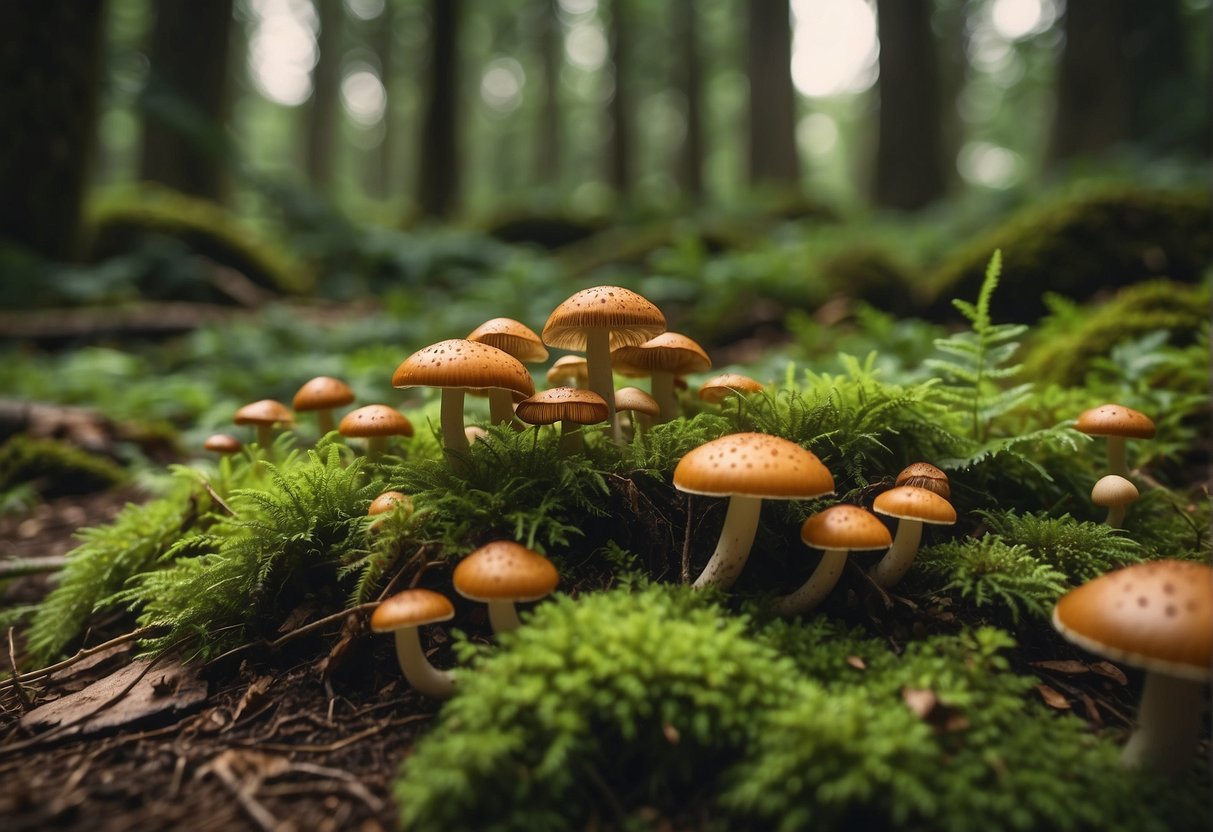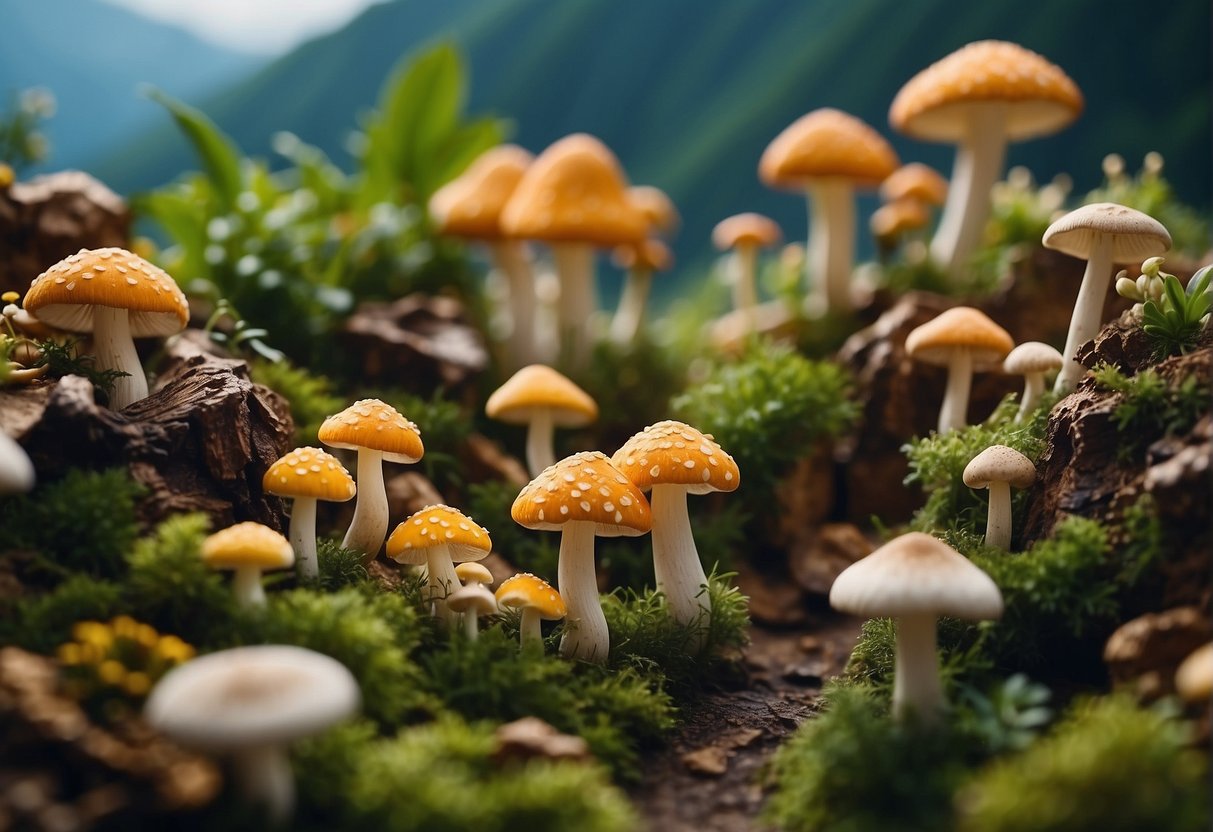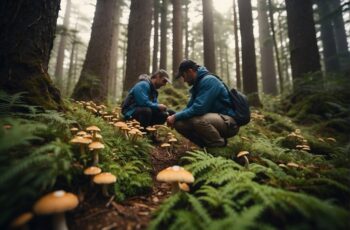Mushrooms are an astonishingly diverse group of fungi that can be found in a multitude of colors, shapes, and sizes. A mushroom chart is an essential tool for anyone keen on exploring the rich world of mycology, whether you’re a hiker seeking to understand the forest floor or a budding mycologist aiming to expand your knowledge. These charts not only serve as a visual guide for mushroom identification but also provide valuable information on the habitat and seasonality of various species.

Understanding mushrooms goes beyond mere identification; it fosters a deeper appreciation for the intricate relationships they have with their environment. As you delve into the realm of mushrooms, you become more adept at recognizing edible varieties, which can add a new dimension to your culinary adventures. Moreover, awareness of mushrooms contributes to conservation efforts, ensuring that these crucial components of the ecosystem continue to thrive for future generations to enjoy.
Key Takeaways
- A mushroom chart is a vital resource for identifying and understanding diverse fungi.
- Knowledge of mushrooms enhances both ecological appreciation and culinary exploration.
- Familiarity with mycology contributes to the conservation of mushroom species and their habitats.
Mushroom Identification
Identifying mushrooms accurately is crucial for any enthusiast. It involves understanding various aspects such as physical characteristics, ecology, and scientific methods.
Physical Characteristics
Examine the shape, color, and texture of the cap, stem, and gills or pores underneath the cap. Noting these physical characteristics is the first step in identification. For instance, Russula mushrooms have distinctive red or green caps with white stems, while Cantharellus, known as chanterelles, have a unique funnel shape and wavy edges.
Species-Specific Features
Each species has unique features; Amanita mushrooms often have a ring on the stem and a distinct bulbous base. Understanding features like the color of the spore print, which can range from white to dark brown, is vital. For example, Coprinopsis leaves a black spore print while Armillaria mellea, or honey fungus, features a white one.
Habitat and Seasonality
Mushrooms thrive in specific environments and seasons. Boletes favor wooded areas, and certain oyster mushrooms grow on dead hardwood. Knowing the preferred habitat and season, along with the temperature conditions, will help you locate species such as the delicious chanterelle in the wild.
Edibility and Toxicity
Understanding edibility is critical for foragers. Edible mushrooms like chanterelles are sought after for their delicious flavor, while poisonous ones like Russula emetica must be avoided. Toxicity can range from upset stomach to life-threatening, so always confirm edibility before consumption.
Advanced Identification Techniques
Researchers often utilize techniques like DNA sequencing to conclusively identify species. While not practical for casual foraging, these techniques are important in the field of mycology.
Identifying Mushroom Communities
Mushrooms often grow in communities. Discovering an ultimate mushroom community can provide insight into the ecological interactions and help predict where certain species may be found.
Identification Resources
Utilize a mushroom identification helper or a comprehensive database for accurate identification. Trusted sources often include high-quality photos and detailed descriptions for comparison. For visually-rich guidance, consider subscribing to YouTube channels dedicated to mycology.
Mycological Studies
For those serious about the study of mushrooms, engage in mycological studies. This scientific discipline provides a deeper understanding and appreciation of fungi, their ecological importance, and their diverse applications.
Remember, accuracy in mushroom identification can mean the difference between a delightful meal and a medical emergency. Use available resources responsibly and consider joining local foraging groups or online communities to learn from experienced mushroom hunters.
Culinary Aspects of Mushrooms
Mushrooms have a vast culinary landscape, with a variety of types that can add unique flavors and textures to your dishes. Insight into preparing and cooking mushrooms can elevate your meals, whether you’re an avid forager or a market-goer.
Edible Species
When venturing into the world of edible fungi, you’ll encounter a rich array of species. Morels and puffballs are treasured finds that can be foraged in the wild, often heralding the arrival of spring for mushroom enthusiasts. At the same time, chanterelles and oyster mushrooms are famed for their delicious taste and are commonly available at your local farmer’s markets.
Preparing Mushrooms
Your preparation of mushrooms is crucial to their culinary performance. Start by gently brushing dirt off your edible mushrooms; washing is only required if they’re especially dirty. It’s pivotal to cook mushrooms properly—overcooking can lead to a rubbery texture, while just right can bring out their inherent delicious flavors.
Foraging and Sustainability
The practice of foraging for wild mushrooms connects you with nature and can be quite rewarding. If you’re heading out to forage, always have a field guide or a knowledgeable companion to distinguish between safe edible mushroom species and potentially harmful ones. Sustainable foraging practices ensure that these woodland treasures continue to thrive for future seasons.
Mushroom Recipes and Cooking
From sautéing to baking, mushrooms are remarkably versatile. Incorporate morels into your pastas for an earthy flavor, or grill oyster mushrooms for a meaty texture. No matter which delicious mushroom varieties you have, they can transform a simple dish into a culinary delight. For inspiration, search for delicious mushroom videos to expand your cooking repertoire.
Mushroom Conservation and Ecology

In the realm of fungi, the sustainability of mushroom populations and their role in environmental health are critical. You’ll learn about the influences mushrooms have on our ecosystems and the efforts put in place to conserve them.
Environmental Impact
Mushrooms, such as Armillaria mellea also known as honey fungus, play a pivotal role in your woodland walks. They’re decomposers, breaking down organic matter and recycling nutrients back into the soil. This nutrient cycle is essential for other plant and animal communities in the habitat. The impact of fungi isn’t confined to the forest floor; mushrooms influence the entire ecosystem, from soil chemistry to plant health.
Conservation Efforts
Mushroom conservation is a balance between protecting their habitats and understanding their role in the ecosystem. Initiatives include:
- Habitat Protection: Ensuring that forests and other mushroom habitats remain undisturbed.
- Sustainable Harvesting: Regulating the collection of mushrooms to prevent overharvesting, especially for prized edible Asian mushrooms.
- Research and Identification: Continual efforts to identify and document fungi species, deepening our understanding of their ecological roles.
These efforts help maintain not just the mushrooms, but the intricate web of life that depends on them.
Mushrooms in Ecosystems
The mushrooms you encounter while hiking or foraging are more than just a potential meal or a beautiful sight; they are integral to their habitat’s health. Fungi like Armillaria facilitate the growth of plant communities by decomposing dead organic matter, providing essential nutrients. Their underground networks, known as mycelium, can connect different plants, helping to distribute water and nutrients, and even communicate distress signals. Your awareness and respect for these complex relationships are critical for the continued vitality of these ecosystems.
The Mushroom Community and Culture

The mushroom community is diverse and vibrant, encompassing online forums, local foraging expeditions, and events where enthusiasts gather. Whether you’re looking to identify the Morchella genus, or find the ultimate mushroom community to subscribe to on YouTube, there’s a place for you.
Online Communities
The internet is a rich soil where the mushroom community takes root and thrives. Specialized forums and websites provide immense knowledge about mushroom varieties and foraging techniques. Within these online communities, members share their finds, exchange tips on identifying edible species, and discuss the best practices for sustainable foraging. They are a vital resource if you want to grow your understanding of fungi. You can easily find a group to subscribe now for daily updates on all things mycological.
- Ultimate Mushroom Community
- YouTube channels with tutorials and discussions
- Forums for mushroom identification and cultivation
- Subscribe for expert advice and community support
Local Foraging Groups
Engaging with local foraging groups can enhance your outdoor experience. These groups organize outings where you can learn firsthand from seasoned foragers. By joining these excursions, you can familiarize yourself with the local species, including the esteemed Morchella genus, and learn the art of distinguishing between safe-to-eat and potentially hazardous mushrooms. Local groups often collaborate with farmers’ markets, providing a farm-to-table experience for community members.
- Foraging Opportunities:
- Guided tours with expert foragers
- Partnership with local farmer’s markets
- Seasonal foraging events for community members
Mushroom Events and Markets
Mushroom events and markets serve as a bustling hub for collectors, cultivators, and cuisine enthusiasts. You’ll find a plethora of mushrooms on display, from fresh, locally foraged specimens to rare and exotic varieties. These markets often feature workshops, cooking demonstrations, and discussions led by mycology experts. Here, you can indulge your passion for mushrooms, meet like-minded individuals, and even bring home a few prized edibles to savor.
- Mushroom Markets Features:
- Farmer’s markets with locally foraged mushrooms
- Culinary workshops for mushroom-based dishes
- Networking opportunities with mushroom enthusiasts
Dive into the world of mushrooms, enrich your knowledge, build connections, and enjoy the communal spirit that makes mushroom culture a fascinating realm to explore.


